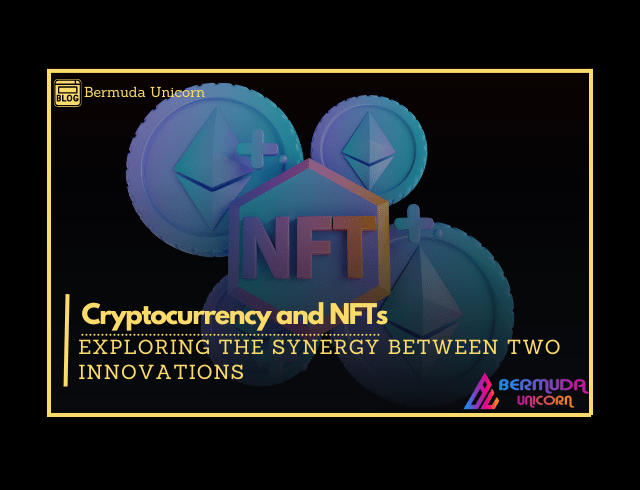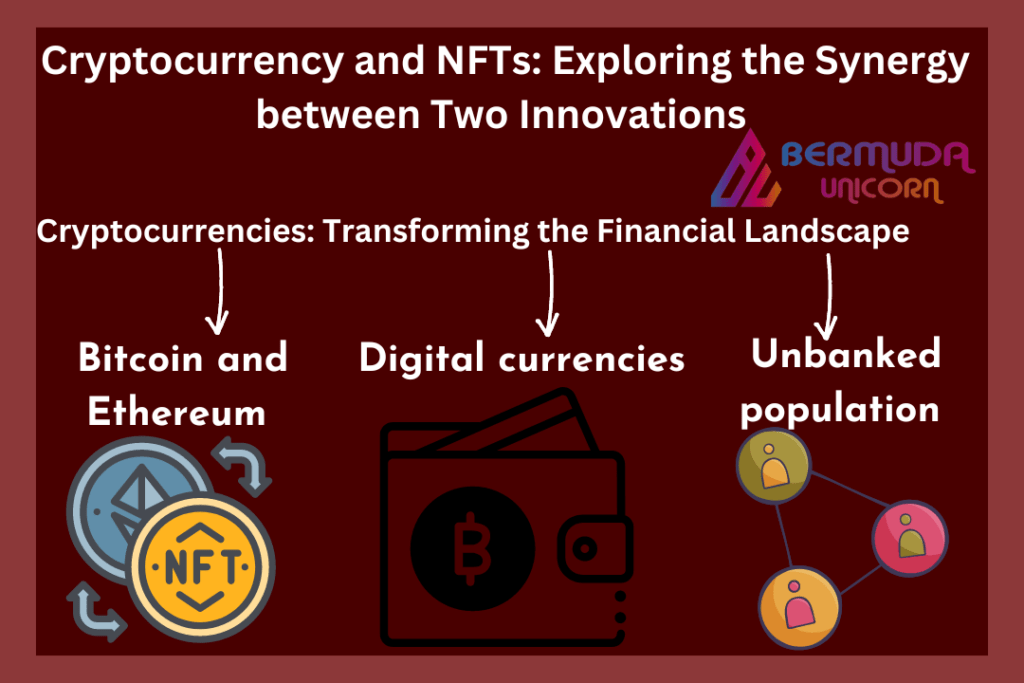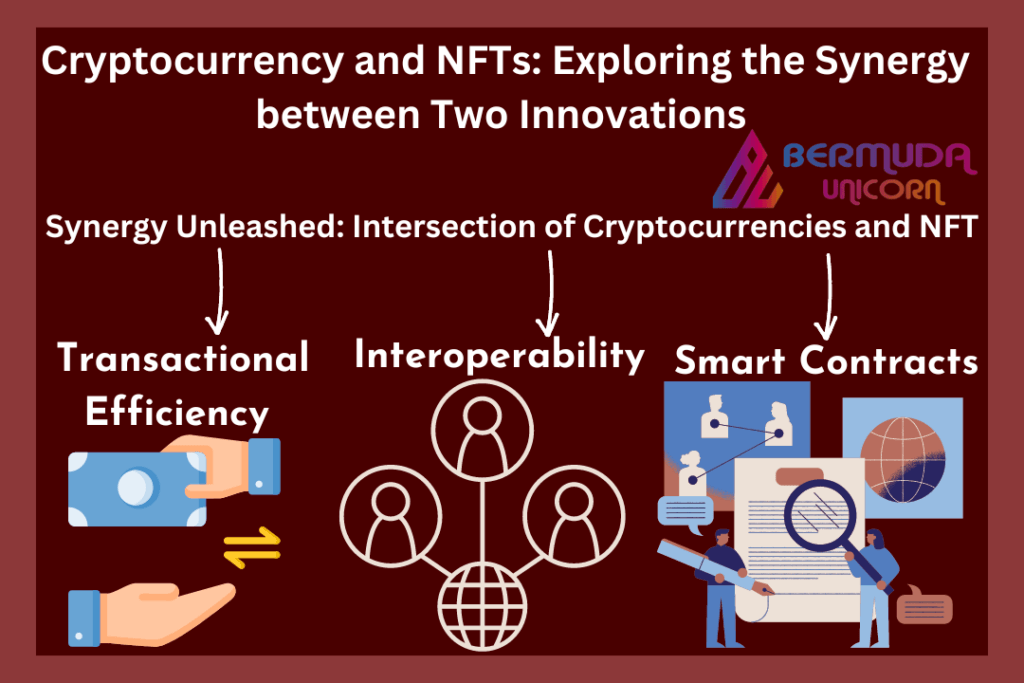

Introduction:
In the ever-evolving digital landscape, two groundbreaking technologies have garnered significant attention: Cryptocurrencies and non-fungible tokens (NFTs). While Cryptocurrency has revolutionized finance, NFTs have disrupted the art and collectibles market. The connection between these two inventions goes beyond their respective fields, though. We will examine how cryptocurrencies and NFTs work in concert in this blog article, looking at how they enhance and complement one another.
Cryptocurrency: Transforming the Financial Landscape

By introducing decentralized administration, digital currencies like Bitcoin and Ethereum have changed how we see and utilize money. These digital assets provide permanence, transparency, and security thanks to blockchain technology. Currencies encourage financial inclusion, particularly for the without a bank account population, by removing intermediaries like banks and facilitating peer-to-peer cross-border transactions. Since transactions are not governed by a single institution thanks to the centralized structure of cryptocurrencies, confidence is increased and reliance on standard financial systems is decreased.
NFTs: Redefining Ownership and Digital Assets
Non-fungible tokens (NFTs) have emerged as a unique form of digital asset that represents ownership or authenticity of a specific item or piece of content. Unlike cryptocurrencies, NFTs cannot be exchanged on a one-to-one basis because each token possesses unique characteristics and value. NFTs leverage blockchain technology to establish a transparent record of ownership and ensure provenance. This immutable ledger allows creators and buyers to verify the authenticity and ownership history of the digital assets represented by NFTs. From digital art, music, and films to virtual real estate and virtual collectibles, NFTs offer a new way to own and interact with digital content.
Synergy Unleashed: The Intersection of Cryptocurrencies and NFTs
Transactional Efficiency: Cryptocurrencies provide a seamless and efficient medium of exchange for NFTs. By integrating cryptocurrencies as the preferred mode of payment for NFT purchases, transactions become faster, more secure, and less reliant on traditional banking systems. This synergy facilitates frictionless cross-border transactions, removing the complexities associated with currency conversions and international transfers.
Liquidity and Interoperability: The integration of cryptocurrencies with NFTs unlocks liquidity and enhances market dynamics. Cryptocurrencies facilitate the creation of decentralized exchanges and liquidity pools, enabling users to buy, sell, and trade NFTs seamlessly. This interoperability expands the reach of NFTs, making them accessible to a broader audience and increasing their market liquidity.

Smart Contracts and Royalties: Smart contracts, programmable agreements that execute predefined conditions automatically, have played a pivotal role in the rise of NFTs. By incorporating cryptocurrencies into NFT smart contracts, creators can receive royalties automatically whenever their NFTs are sold or traded. This feature empowers artists and content creators, ensuring ongoing revenue streams and incentivizing further innovation. Smart contracts also provide transparency and accountability in royalty distributions, eliminating the need for complex licensing agreements.
Fractional Ownership: Cryptocurrencies enable the fractionalization of NFT ownership, opening up new investment opportunities. Fractional ownership allows multiple investors to own a fraction of an NFT, making high-value assets more accessible and liquid. Cryptocurrencies facilitate this fractionalization through the creation of tokenized shares that represent a portion of the NFT’s value. Fractional ownership broadens participation in the NFT market and allows investors with different budget ranges to participate in the ownership of valuable digital assets.
Gamification and Virtual Economies: Cryptocurrencies and NFTs are reshaping the gaming industry by introducing virtual economies and enabling ownership of in-game assets. Players can earn cryptocurrencies or NFTs as rewards for their achievements, trade virtual assets, and even create their own virtual worlds. This synergy creates new opportunities for gamers, developers, and investors alike. Virtual economies powered by cryptocurrencies and NFTs create vibrant ecosystems where virtual assets hold real-world value and offer unique experiences for players.
Conclusion
The merger of cryptocurrencies with NFTs symbolizes a potent technological advancement that transcends traditional boundaries. The transactional efficiency, liquidity, and accessibility of NFTs are significantly enhanced by integrating cryptocurrencies. The combination of these two technologies opens up new possibilities, transforming various sectors and fundamentally altering how we perceive value, ownership, and digital assets in the modern world. As innovation continues and new applications emerge, the synergistic link between cryptocurrencies and NFTs will shape the future of finance, art, collectibles, gaming, and beyond. It is an exciting time where the power of decentralization and digital ownership converge, paving the way for a more inclusive and interconnected digital ecosystem.